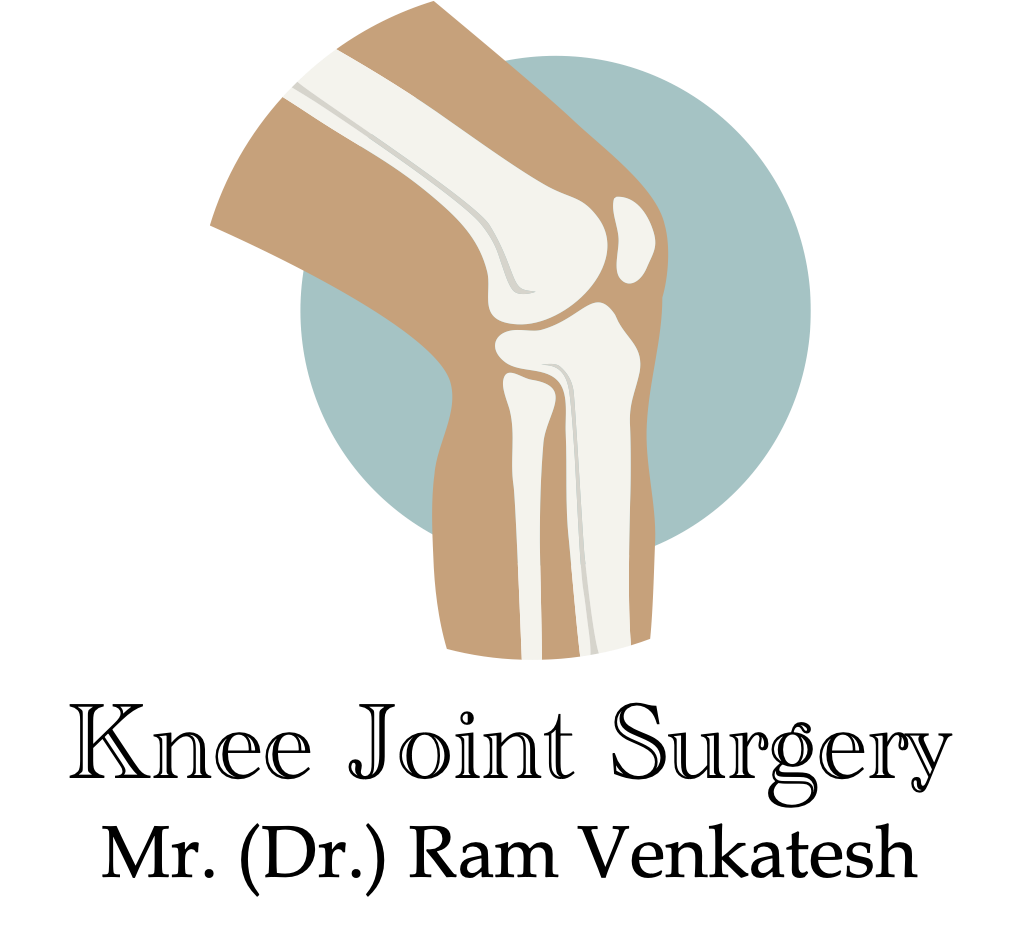Examination Technique
Examination with patient standing
Check feet abnormalities, knee alignment, muscle wasting and gait.
Alignment
It is important to look for alignment both in Osteoarthritis and in the management of soft tissue knee problems. Look for Varus or Valgus, Fixed flexion and rotational abnormalities. Identifying malalignment is important in the management of chondral lesions and also ligament injuries.
Windswept knees – right varus and left valgus –
Patella dislocations can be associated with valgus knees and rotational malalignment. Malrotation with patellar dislocation –
Gait
Observe especially for foot progression angles (Intoeing gait), squinting patellae (Picture), varus thrust in gait (Video)
Varus thrust –
Muscle wasting
Quadriceps wasting is noticed earliest in the Vastus Medialis. Wasting can be measured at a fixed distance above the patella and compared with normal side.
Knee joint effusion
Causes:
Trauma ACL rupture, meniscal tear, fractures, Patella dislocation, traumatic synovitis, Atraumatic Osteoarthritis, Infection, Gout, Inflammatory arthritis, PVNS, Intraarticular bleed
Isolated MCL sprain should not have a knee effusion. Observe for parapatellar fullness. Presence of a Grade 1 effusion can be a subtle sign of chondral or meniscal damage.
New development of an effusion after a total knee replacement may be a sign of Infection, Polyethylene wear, loosening or instability.
- Grade I Diagnosed by emptying medial gutter and observing it refill (Video).
- Grade II Cross Fluctuation present
- Grade III Patellar tap present
Testing for effusion
This video demonstrates testing for an effusion –
Valgus stress
This video demonstrates valgus stress –
Lachman test
This video demonstrates the Lachman test and shows both ACL asnd PCL laxity in a knee dislocation –
Pivot Shift
The pivot shift phenomenon is described as the forward subluxation of the lateral tibial plateau on the femoral condyle in extension and the spontaneous reduction in flexion.
Galway and Macintosh (1972) describe the pivot shift test as follows:
The patient is placed on the examining table lying on his back with muscles relaxed. The affected extremity is then lifted from the table with the heel resting in the palm of the examiner’s hand and the foot pointing vertically upward. The examiner’s hand then grasps the lateral side of the upper tibia at the level of fibular head first liftingthe knee into slight flexion and forcing it into the valgus position. Flexion of the knee is continued maintaining the valgus thrust. As the knee passes into 30-40 degrees of flexion the lateral tibial plateau which has been subluxed anterior to the lateral femoral condyle spontaneously reduces with a “jump” or “thud” due to the tension of the iliotibial tract on the anterior lateral tubercle of the tibia (Gerdy’s tubercle) as this strong band luxates posteriorly so that the bulk of its fibers pass posterior to the transverse axis of rotation of the knee. This subluxation/reduction phenomenon may of course be reversed as described by Hughston by applying the same stresses to the knee and starting from the flexed reduced position and extending the knee to the subluxed position.
They stated that at the time of initial injury weight bearing was predominantly on the lateral compartment of the knee, that the quadriceps muscle was strongly contracted tending to pull the tibia forward, that the patient was usually running, suddenly decelerated so that the knee was in near extension and at the same time moving away from the supporting foot (cutting) with the knee simultaneously flexing. This movement was accompanied by a sensation of a pop and the knee “going out of joint.” They attributed this to anterior cruciate ligament injury with resulting laxity and stated that the quadriceps femoris muscle pulled the tibia strongly forward placing the anterior cruciate ligament under strong tension causing it to rupture when forward subluxation of the tibia combined with lateral compartment weight bearing and external tibial rotation were present.
Slocum described a different technique for demonstrating this phenomenon.
- Positive Pivot shift phenomenon after ACL reconstruction relates to functional impairment and poor patient satisfaction. The question is whether reducing the pivot shift will reduce risk of osteoarthritis and whether double-bundle ACL reconstruction can achieve this.
- Galway RD, Beaupre A, Macintosh DL. Pivot shift: a clinical sign of symptomatic anterior cruciate insufficiency. J Bone Joint Surg Br. 1972;54:763-764
- Bach BR Jr, Warren RF, Wickiewicz TL. The pivot shift phenomenon: results and description of a modified clinical test for anterior cruciate ligament insufficiency. Am J Sports Med. 1988;16:571-576
Slocum DB, James SL, Larson RL, Singer KM. Clinical test for anterolateral rotary instability of the knee. Clin Orthop Relat Res. 1976;118:63-69 - Hughston, J. C., Cross, M. J. and Andrews, J. R.: Classification of lateral ligament instability of the knee, 87th Annual Meeting of America1 Orthopaedic Association, San Francisco, 1974.
- Noyes FR, Grood ES, Cummings JF, Wroble RR. An analysis of the pivot shift phenomenon: the knee motions and subluxations induced by different examiners. Am J Sports Med. 1991;19:148-155.
- Kocher MS, Steadman JR, Briggs KK, Sterett WI, Hawkins RJ. Relationships between objective assessment of ligament stability and subjective assessment of symptoms and function after anterior cruciate ligament reconstruction. Am J Sports Med. 2004;32:629-634.
